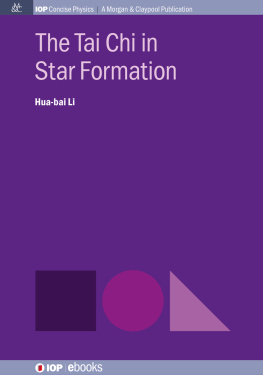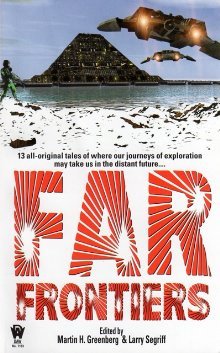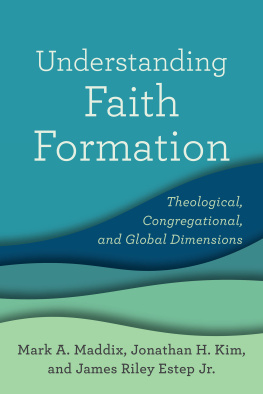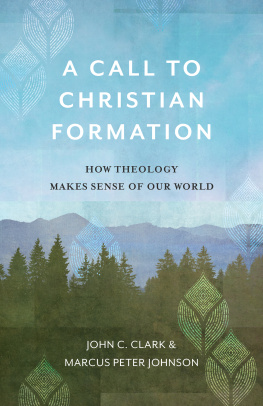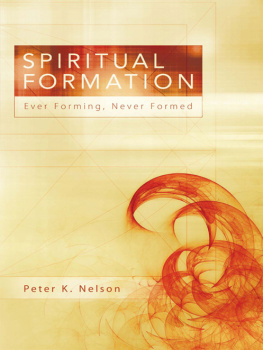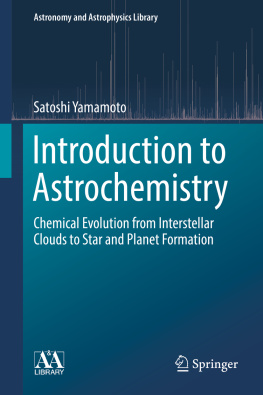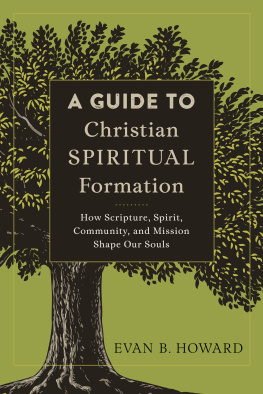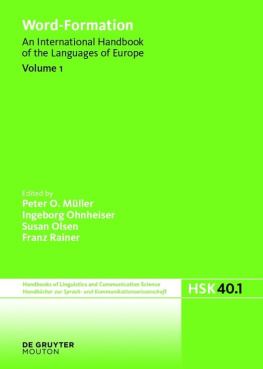Hua-bai Li - The Tai Chi in Star Formation
Here you can read online Hua-bai Li - The Tai Chi in Star Formation full text of the book (entire story) in english for free. Download pdf and epub, get meaning, cover and reviews about this ebook. year: 2017, publisher: Morgan & Claypool Publishers, genre: Art. Description of the work, (preface) as well as reviews are available. Best literature library LitArk.com created for fans of good reading and offers a wide selection of genres:
Romance novel
Science fiction
Adventure
Detective
Science
History
Home and family
Prose
Art
Politics
Computer
Non-fiction
Religion
Business
Children
Humor
Choose a favorite category and find really read worthwhile books. Enjoy immersion in the world of imagination, feel the emotions of the characters or learn something new for yourself, make an fascinating discovery.
The Tai Chi in Star Formation: summary, description and annotation
We offer to read an annotation, description, summary or preface (depends on what the author of the book "The Tai Chi in Star Formation" wrote himself). If you haven't found the necessary information about the book — write in the comments, we will try to find it.
The Tai Chi in Star Formation — read online for free the complete book (whole text) full work
Below is the text of the book, divided by pages. System saving the place of the last page read, allows you to conveniently read the book "The Tai Chi in Star Formation" online for free, without having to search again every time where you left off. Put a bookmark, and you can go to the page where you finished reading at any time.
Font size:
Interval:
Bookmark:

Hua-bai Li
Chinese University of Hong Kong
Morgan & Claypool Publishers
Copyright 2017 Morgan & Claypool Publishers
All rights reserved. No part of this publication may be reproduced, stored in a retrieval system or transmitted in any form or by any means, electronic, mechanical, photocopying, recording or otherwise, without the prior permission of the publisher, or as expressly permitted by law or under terms agreed with the appropriate rights organization. Multiple copying is permitted in accordance with the terms of licences issued by the Copyright Licensing Agency, the Copyright Clearance Centre and other reproduction rights organisations.
Rights & Permissions
To obtain permission to re-use copyrighted material from Morgan & Claypool Publishers, please contact .
ISBN 978-1-6817-4293-9 (ebook)
ISBN 978-1-6817-4292-2 (print)
ISBN 978-1-6817-4295-3 (mobi)
DOI 10.1088/978-1-6817-4293-9
Version: 20171001
IOP Concise Physics
ISSN 2053-2571 (online)
ISSN 2054-7307 (print)
A Morgan & Claypool publication as part of IOP Concise Physics
Published by Morgan & Claypool Publishers, 1210 Fifth Avenue, Suite 250, San Rafael, CA, 94901, USA
IOP Publishing, Temple Circus, Temple Way, Bristol BS1 6HG, UK
To whom confront, not just climb, the giants.
Today is Ivys first day of kindergarten and parents are allowed to join the class. The biggest decoration on the wall of the classroom is a star shape made from tree branch sticks. The teacher reads a story book Monsters love school to the kids; The monsters love to explore the unknown, says the teacher while the book shows a two-page drawing of Space. What a privilege to have a career as an astronomer! I tell myself.
Back to my school, I have to teach final-year physics-major students star formation and stellar physics within one semester. This book covers most of the information I try to convey during the star-formation half of the semester. Star formation has been a field of controversy for two decades. This makes star formation a perfect topic for final-year students who plan to go to graduate school. Their mindsets have to change very abruptly from simply swallowing correct answers in text books to being very suspicious while reading journal articles. I ask them to be very suspicious of my lectures, which is what they should have always been, but, for most students, this is a luxury they can ill afford under the heavy university curriculum.
It is generally believed that molecular clouds will fragment under self-gravity and only a small fraction of a cloud will go through a series of fragmentation/contraction and become dense enough to fuse hydrogen into heliumthe birth of stars. The controversial part is the detail of the fragmentation (chapter ). Thus, it takes longer for astronomers to identify (observe) the role played by magnetic fields.
Besides remaining suspicious, the recent history of star formation also reminds students to stay open minded. While the importance of turbulence was quickly and solidly established, the assumption of super-Alfvenic used in early simulations became as solid a belief in many people. And, completely illogically, it also became the reason for some to oppose observations showing that magnetic fields could be as important. Decisions to resist alternative ideas and accept mainstream ones should both be taken with great care, or one will only be contaminating science with faith. While the popular metrics of research nowadays (e.g. publication numbers, citations and project outcome predictability) encourage staying closely to the mainstream, it becomes critical to frequently remind students, and myself, the reason for being a scientist, the reason we have known since kindergarten.
Hua-bai Li
14 August 2017, CUHK
The CUHK Star Formation Group (SFG.
Tinging, Elsie and Ivy have very successfully prevented me from working too hard and kept this book concise. They are behind everything I do.
), Hongli Liu, Zhuo Cao
Hua-bai Li

Hua-bai Li was born in Taipei, Taiwan in 1974. He received the Ph.D. degree in astrophysics from Northwestern University in 2006. Afterwards, he had worked in the Harvard-Smithsonian Center for Astrophysics and Max Planck Institute for Astronomy. In Aug. 2013, he started his professorship in the Department of Physics, The Chinese University of Hong Kong. His research group study how magnetic fields and turbulence regulate star formation; they use various novel methods in observations, numerical simulations and instrumentation.
We ourselves are made of stardust.
Carl Sagan
Two things awe me most, the starry sky above me and the moral law within me.
Imanuel Kant
Stars are the building bricks of the Universe and the energy supply for life. The physics behind star formation is crucial for understanding the evolution of galaxies and is also essential for understanding the origin of planetary systems, the nurseries of life. A great triumph of twentieth century astronomy is the explanation of the life and death of a star, which is pretty much decided by one parameter: the mass. On the other hand, the birth of stars is still a mystery.
Stars form from the gravitational collapse of large clouds of gas, Immanuel Kant proposed more than 250 years ago, which was probably not an surprising development after Isaac Newton announced his law of universal gravitation. It took around 150 years to add another ingredient, gas pressure, courtesy of James Jeans. Another 100 years have passed, and most head-scratching now is devoted to two newer ingredients: the magnetic field and turbulence (figure ).
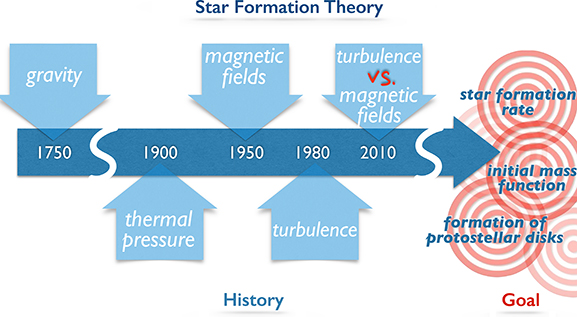
Figure 1.1. A summary of the development history and final goals of star formation theory.
Radio astronomy, invented in the last century, has revealed more detail of the process that transfers gas clouds into stars and has redefined the problem of star formation. A successful theory has to at least explain the following observations:
- Star formation efficiency and rate. In our Galaxy, only a few per cent of the cloud mass will be transformed to stars per million years (e.g. Lada et al ).
- The initial mass function. The distributions of stellar initial mass from various gas clouds seem to follow a universal shape, peaking around 0.5 solar masses (Bastian et al ).
- Protostellar discs and bipolar jets. This is a stage commonly observed in very young low-mass stars. The discs have sizes of the order of 100 AU, comparable to the Solar System (figure ). Many protostellar discs are companied by highly collimated bipolar jets.
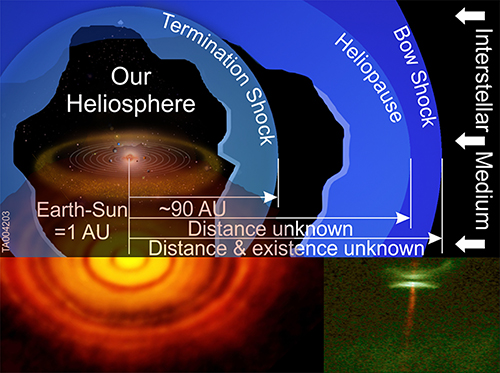
Font size:
Interval:
Bookmark:
Similar books «The Tai Chi in Star Formation»
Look at similar books to The Tai Chi in Star Formation. We have selected literature similar in name and meaning in the hope of providing readers with more options to find new, interesting, not yet read works.
Discussion, reviews of the book The Tai Chi in Star Formation and just readers' own opinions. Leave your comments, write what you think about the work, its meaning or the main characters. Specify what exactly you liked and what you didn't like, and why you think so.

